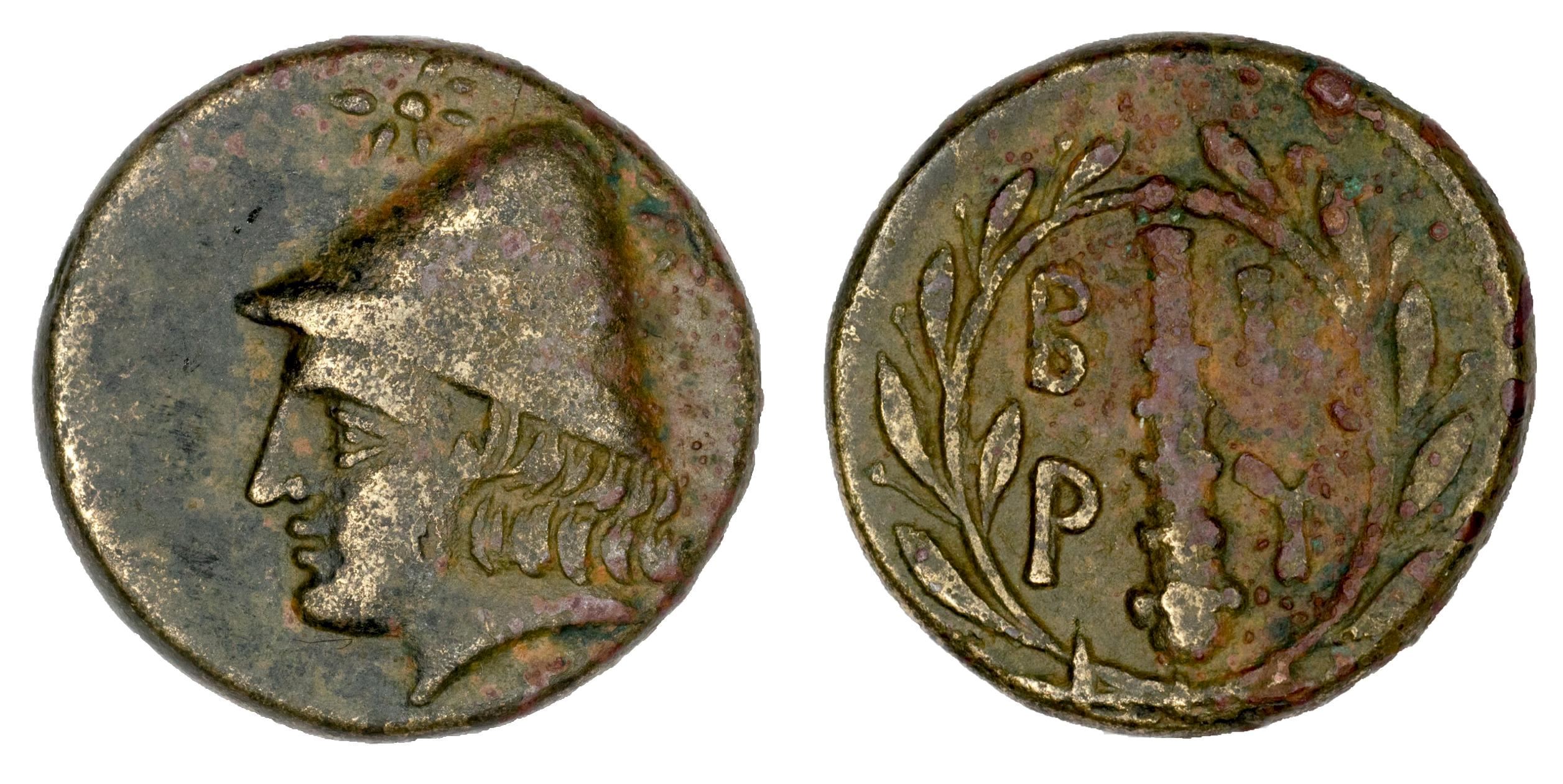In antiquity, the Greek world extended far beyond what we think of today as Greece. Most of Anatolia, which is Turkey today, was Greek, for example - just as large parts of the western Mediterranean were colonized by industrious Greeks, with Sicily at the center stage.
And in north-western Anatolia, in what was called Troas (after Troy), once lay a city called Birytis. And.. that's more or less all we know about Birytis. We don't know exactly where is was, it's not mentioned in any written sources. We only know it from coins, and the evidence suggests that it appears to have existed from acround 350-250 BC.
Monotonous Motifs
Virtually all coins from Birytis depic the same thing. On the obverse a male bust, with or without a beard, wearing a silly triangular hat. On the reverse a club surrounded by a laurel wreath and the letters BI PY for Birytis.
The man with the hat is (a) Kabeiros - a kind of nature god who was worshiped in secret orgiastic dancing and drinking lodges, and who was alledgedly the son of the blacksmith god Hephaistos. But no one knows for sure, because the rituals were secret - and no account of them survives.
What about the silly hat?
We know a lot about the hat, though. It is a pileus - a shadeless felt hat, which was mostly used as a kind of traveling hat, but as a symbol of FREEDOM! In the Greek world, this is the hat which was presented to freed slaves. After receiving the pileus, the former slave was free and could, as it were, wear their hat as they pleased.
This tradition was adopted by the Romans, and aftet the ides of March, Brutus struck a coin with a pileus and two daggers on it, to symbolize that with the murder of Julius Caesar they had struck a blow for freedom (and against tyranny). Unfortunately, I will never be able to afford that coin - in 2011 a nice copy was sold for USD 546,250, and prices have risen sharply since then.
** Pileus 2: Return of the Pileus**
In the 18th and 19th centuries, when the bourgoisie became enamoured with ideals about liberty, equality and fraternity, they found inspiration in ancient ideals and practices. Only, they confused the pileus with the Phrygian cap, the red hat which became popular during the French Revolution(s). But maybe you'd have had fewer recruits with the pileus, as it is quite silly indeed.
And who wants to look silly for the revolution?
Obverse: Head of Kabeiros left, wearing conical helmet; two stars above.
Reverse: B I / P Y, Club within wreath.
18mm, 3.48g
SNG von Aulock 1502-3; SNG München 168
